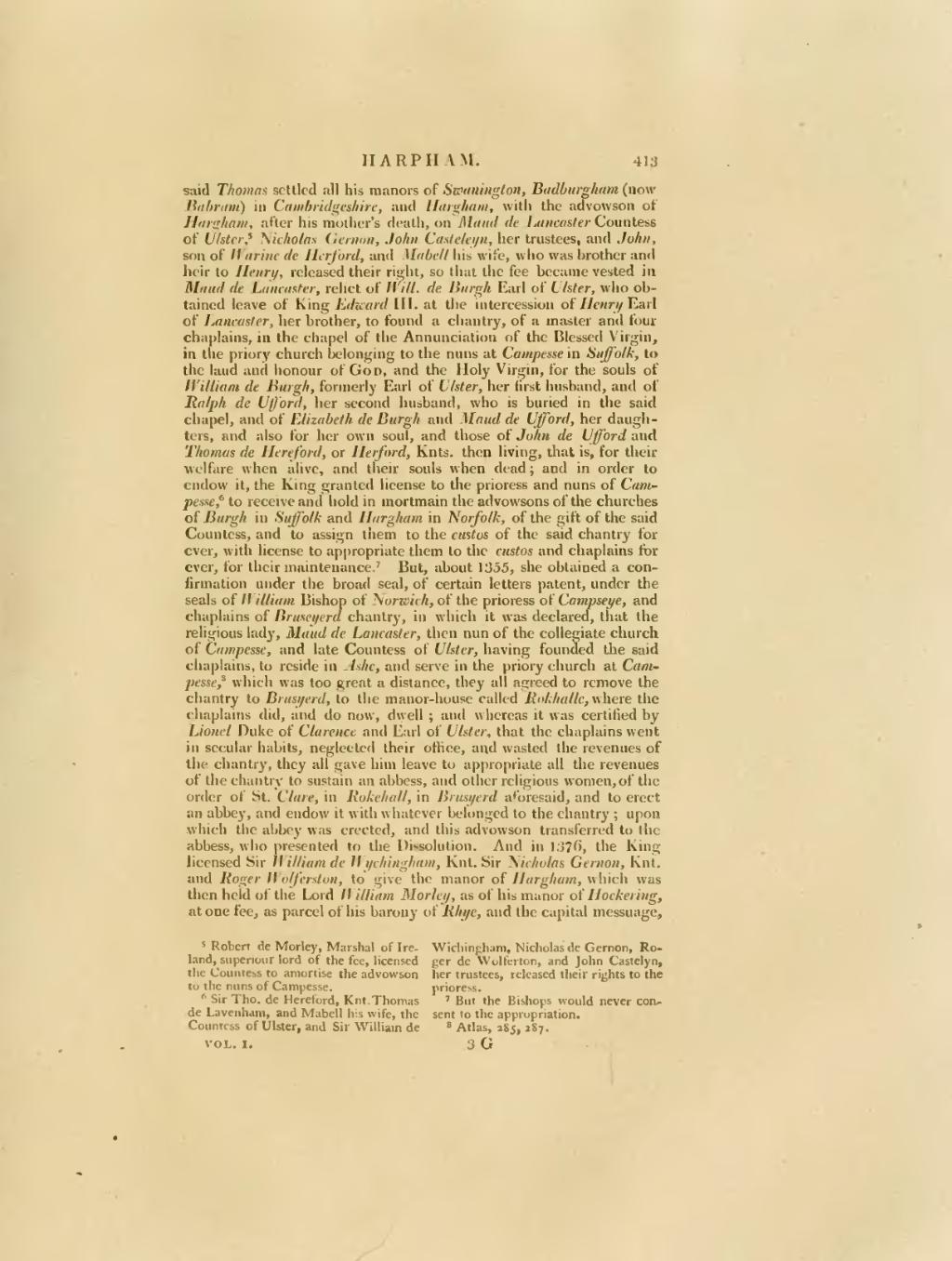said Thomas settled all his manors of Swanington, Badburgham (now Babram) in Cambridgeshire, and Hargham, with the advowson of Hargham, after his mother's death, on Maud de Lancaster Countess of Ulster, Nicholas Gernon, John Casteleyn, her trustees, and John, son of Warine de Herford, and Mabell his wife, who was brother and heir to Henry, released their right, so that the fee became vested in Maud de Lancaster, relict of Will, de Burgh Earl of Ulster, who obtained leave of King Edward III. at the intercession of Henry Earl of Lancaster, her brother, to found a chantry, of a master and four chaplains, in the chapel of the Annunciation of the Blessed Virgin, in the priory church belonging to the nuns at Campesse in Suffolk, to the laud and honour of God, and the Holy Virgin, for the souls of William de Burgh, formerly Earl of Ulster, her first husband, and of Ralph de Ufford, her second husband, who is buried in the said chapel, and of Elizabeth de Burgh and Maud de Ufford, her daughters, and also for her own soul, and those of John de Ufford and Thomas de Hereford, or Herford, Knts. then living, that is, for their welfare when alive, and their souls when dead; and in order to endow it, the King granted license to the prioress and nuns of Campesse, to receive and hold in mortmain the advowsons of the churches of Burgh in Suffolk and Hargham in Norfolk, of the gift of the said Countess, and to assign them to the custos of the said chantry for ever, with license to appropriate them to the custos and chaplains for ever, for their maintenance. But, about 1355, she obtained a confirmation under the broad seal, of certain letters patent, under the seals of William Bishop of Norwich, of the prioress of Campseye, and chaplains of Bruseyerd chantry, in which it was declared, that the religious lady, Maud de Lancaster, then nun of the collegiate church of Campesse, and late Countess of Ulster, having founded the said chaplains, to reside in Ashe, and serve in the priory church at Campesse, which was too great a distance, they all agreed to remove the chantry to Brusyerd, to the manor-house called Rokhalle, where the chaplains did, and do now, dwell; and whereas it was certified by Lionel Duke of Clarence and Earl of Ulster, that the chaplains went in secular habits, neglected their office, and wasted the revenues of the chantry, they all gave him leave to appropriate all the revenues of the chantry to sustain an abbess, and other religious women, of the order of St. Clare, in Rokehall, in Brusyerd aforesaid, and to erect an abbey, and endow it with whatever belonged to the chantry; upon which the abbey was erected, and this advowson transferred to the abbess, who presented to the Dissolution. And in 1376, the King licensed Sir William de Wychingham, Knt. Sir Nicholas Gernon, Knt. and Roger Wolferston, to give the manor of Hargham, which was then held of the Lord William Morley, as of his manor of Hockering, at one fee, as parcel of his barony of Rhye, and the capital messuage,
